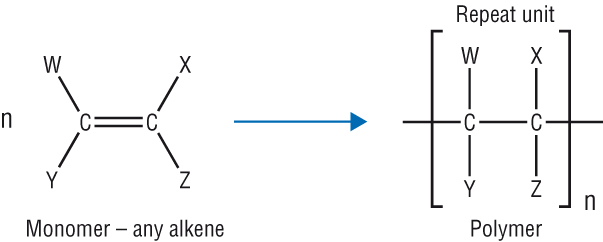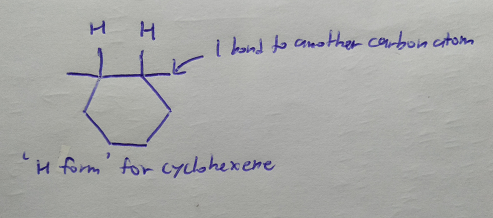This is a less mathematical, and thus slightly simpler, alternative to the user orthocresol's answer.
There's absolutely no need to get confused when coming to addition polymerisation questions. When I learnt about this reaction in my chemistry class this year, my chemistry taught us that a very simple way of handling the question is using this converting to "H form" strategy: Break the $ \pi $ bond and draw the substituents and the two carbons in the shape of the letter H, as shown in the image below. Notice that each of the two carbons have only formed three bonds and each can make another single bond to another atom.

Image source: https://getrevising.co.uk/https_proxy/747

For your question, the 'H form' of cyclohexene is shown above. Now, it is very easy to see that 1 is in fact possible because you are connecting three of these 'H units' in a circular fashion.
Actually, for this particular question, this conversion to the "H form" strategy may seem trivial but for alkenes where the substituents may be "ugly"-looking carbon chains, this strategy can be prove to be very useful.
I hope you find my answer insightful.



